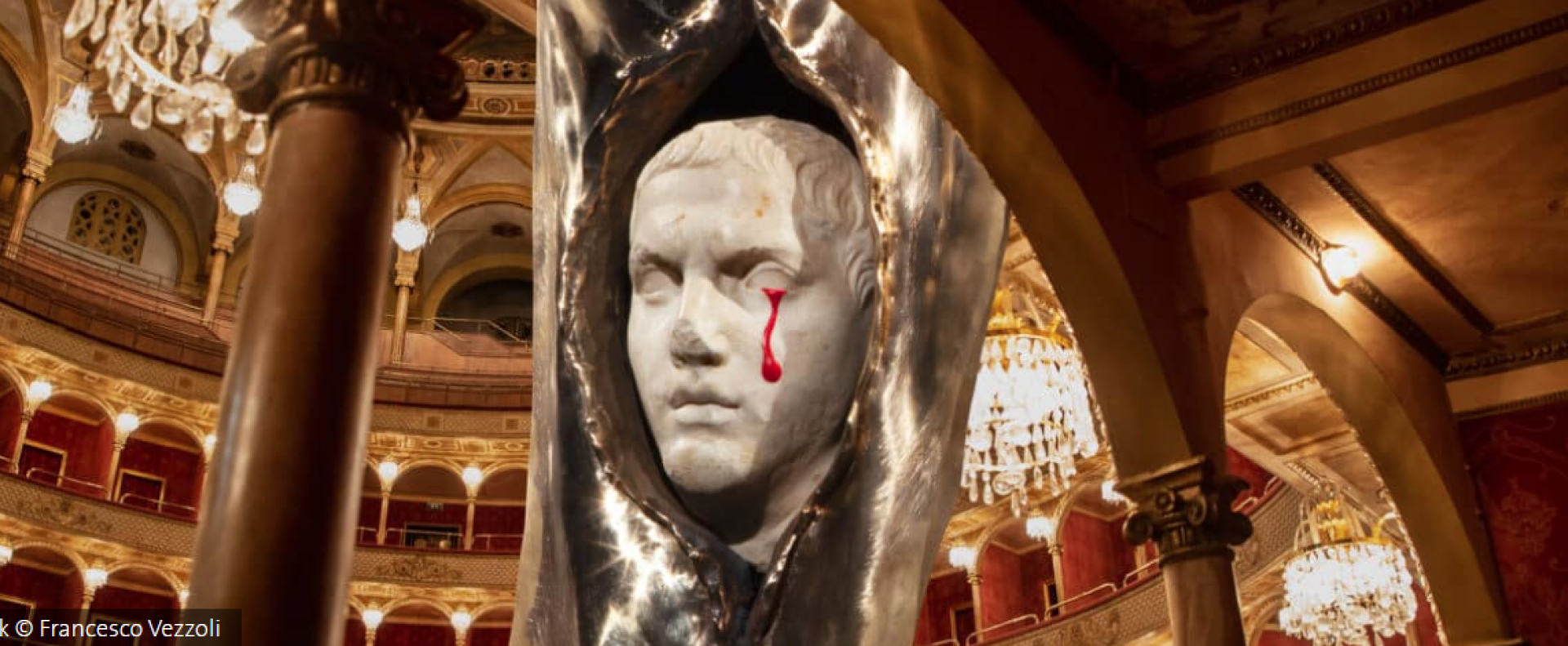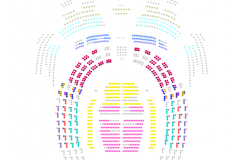Onegin Ballet
April 2025 | ||||||
|---|---|---|---|---|---|---|
Mo | Tu | We | Th | Fr | Sa | Su |
Synopsis
Setting: 1820s, Russia
Act 1
Madame Larina's garden
In the garden, Madame Larina, her daughters Olga and Tatiana, and the nurse are finishing party dresses and discussing Tatiana's upcoming birthday celebrations. They think about the future, and the local girls play an old folk game: whoever looks into the mirror will see her beloved. Lensky, a young poet engaged to Olga, arrives with a friend from Saint Petersburg. He introduces Eugene Onegin, who has come to the country to see if it can offer him any distraction from city life. Tatiana falls in love with the handsome stranger, who seems so different from the country people she knows, while Onegin only sees a naive, romantic girl.
Tatiana's bedroom
That night, Tatiana dreams of Onegin, her first love. She writes him a passionate love letter, which she asks her nurse to deliver.
Act 2
Tatiana's birthday
The local gentry have all arrived to celebrate Tatiana's birthday. Onegin finds the company boring and is struggling to be polite. He is also annoyed by Tatiana's letter, which he thinks is just an outburst of adolescent love. He seeks Tatiana out and tears up her letter, telling her that he cannot love her. Prince Gremin, a distant relative of Tatiana who is in love with her, appears. Madame Larina hopes they will make a good match, but Tatiana hardly notices him as she is so distressed. Onegin decides to provoke Lensky by flirting with Olga, hoping it will relieve his boredom. Olga joins in with the joke, but Lensky takes it seriously and challenges Onegin to a duel.
The duel
Tatiana and Olga try to reason with Lensky but he insists the duel must go ahead. Onegin kills his friend.
Act 3
St Petersburg
Years later, Onegin returns to St. Petersburg after travelling the world. He goes to a ball at the palace of Prince Gremin. Onegin is surprised when he recognises the beautiful Princess Tatiana as the country girl he once turned away. He realises how much he lost through his previous actions.
Tatiana's boudoir
Onegin writes to Tatiana and reveals his love. He asks to see her but she does not wish to see him. She pleads with her husband not to leave her alone that evening. Onegin comes and declares his love for her. Tatiana feels Onegin's change of heart has come too late. And even if she still loves him she has now a new life with Prince Gremin and also after having killed Lensky she would never want Onegin again. She tears up his letter and orders him to leave her forever.
Program and cast
Ballet in three acts
after the poem Evgenij Onegin by Aleksandr Puškin
Conductor: Philip Ellis
Choreography: John Cranko
Supervisione coreografica Reid Anderson
Assistenti alla coreografia Yseult Lendvai, Jean Christophe Lesage
Scene e costumi Elisabeth Dalton
Supervisione dei costumi Diana Schmiedecke
Luci e supervisione delle decorazioni Steen Bjarke
GUEST ARTISTS
Nicoletta Manni 3, 5, 8 (20.00) Apr
Friedemann Vogel 3, 5, 8 (20.00) Apr
CAST
Rebecca Bianchi
Susanna Salvi
Federica Maine
Alessio Rezza
Claudio Cocino
Michele Satriano
Orchestra, Étoiles, Primi Ballerini, Solisti e Corpo di Ballo del Teatro dell’Opera di Roma
Polish National Ballet, Teatr Wielki-Opera Narodowa production
Teatro dell´Opera di Roma Teatro Costanzi
A new way to discover the finest details in different opera houses, theatres one can explore from home in advance through the revolutionary GOOGLE PERFORMING ARTS PROJECT. CLICK ON THE LINK TO SEE THE THEATER.
The Teatro dell'Opera, from its building (1879), at Domenico Costanzi’s request (1810-1898), and 1926, when it was bought by the then Governor of RomE, bore the name of Domenico Costanzi, building contractor and impresario, who committed the building to the Milanese architect Achille Sfondrini (1836-1900), specialized in theatre building and renovation. Built in 18 months on the area prevIously occupied by Heliogabalus’ villa, it was inaugurated on November 27th, 1880 with Semiramide by G. Rossini, conducted by the Maestro Giovanni Rossi, in the presence of the King and Queen of Italy.
Sfrondini’s design privileges the acoustic effect, by conceiving the interior structure as a "resonance chamber": as is particularly evident from the horseshoe shape. At the beginning, the theatre, with a seating capacity of 2,212 spectators, had three tiers of boxes, an amphitheatre, a gallery. All was surmounted by a dome with splendid frescoes by Annibale Brugnoli.
Costanzi invested all his personal assets in the venture. However, due to the despotic refusal of the City Council to redeem the theatre, Costanzi was obliged to manage it himself. Despite the fact that he had to deal with huge financial problems, under his management the opera house held many world premières of such operas as Cavalleria Rusticana (on May 17th, 1890) and L'Amico Fritz(October 31st 1891), both by Pietro Mascagni, who then became very well known.
For a brief period, the theatre was managed by the founder's son, Enrico Costanzi, who contributed to other great premières: Tosca by Giacomo Puccini (January 14th, 1900) and Le Maschere (January 17th, 1901). In 1907, the Teatro Costanzi was managed by the impresario Walter Mocchi (1870-1955) on behalf of the Società Teatrale Internazionale e Nazionale (STIN).
In 1912 Emma Carelli (1877-1928), Mocchi's wife, became the managing director of the new «Impresa Costanzi», named as such following various changes in the company structure. With Rome City Council’s purchase of Costanzi company, the theatre became “Teatro Reale dell'Opera” and a partial rebuilding was commissioned to the architect Marcello Piacentini. Closed on November 15th, 1926, it was re-opened on February 27th, 1928 with the opera Nerone by Arrigo Boito, conducted by the Maestro Gino Marinuzzi.
With the advent of the Republic, the theatre gained the current name of Teatro dell'Opera. In 1958, the building was further remodeled and modernised at the request of the Rome City Council. In over a century, the Teatro dell’Opera has seen its prestige increase internationally. During the several seasons, the most acclaimed voices worldwide followed one another: Enrico Caruso; Beniamino Gigli; Aureliano Pertile; Giacomo Lauri-Volpi; Claudia Muzio; Maria Caniglia; Maria Callas; Renata Tebaldi; Montserrat Caballé; Marilyn Horne; Raina Kabaivanska; Mario Del Monaco; Franco Corelli; Giuseppe Di Stefano; Tito Gobbi; Alfredo Kraus; Ruggero Raimondi; José Carreras; Placido Domingo and Luciano Pavarotti. Among the finest conductors, we can mention Otto Klemperer, Arturo Toscanini, Victor De Sabata, Marinuzzi,Vittorio Gui, Tullio Serafin, Von Karajan, Gianandrea Gavazzeni, Carlo Maria Giulini, Georg Solti, Claudio Abbado, Georges Prêtre, Zubin Mehta, Lorin Maazel, Mstislav Rostropovich, Giuseppe Patanè, Giuseppe Sinopoli, Wolfgang Sawallisch, Nino Sanzogno, Gianluigi Gelmetti and since 2008 the Maestro Riccardo Muti.
How to reach Teatro dell'Opera
Piazza Beniamino Gigli, 7
METRO
Linea A - REPUBBLICA TEATRO DELL'OPERA stop
BUS
Via Nazionale - H, 40, 60, 64, 70, 71, 170, 116T
Via Depretis - 70, 71
Via Cavour - 16, 75, 84, 150 (festivo), 360, 590, 649, 714
Stazione Termini - 16, 38, 75, 86, 90, 217, 310, 360, 649, 714
TAXI
phone number - 06.3570

 EN
EN DE
DE IT
IT FR
FR ES
ES RU
RU JP
JP RO
RO
 Seating plan
Seating plan 